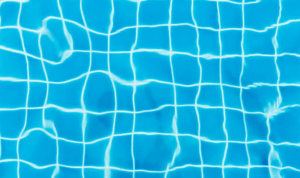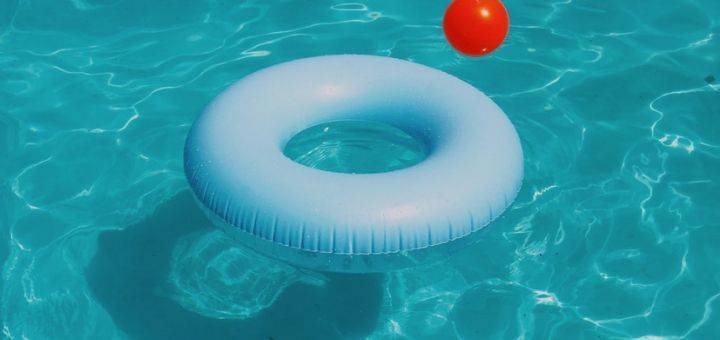If your above ground pool leaks, finding the leak may not be an easy task. A leak could be anywhere inside the pool, the skimmer gaskets, returning gaskets, light gaskets, and probably the stair gaskets.
The process of locating the leak might take long or fast so the best piece of advice to take is not to be in a hurry but take your time.
Here’s a to-do list from first to last:
Best Tips to Tell Where Your Pool Is Leaking
If you notice puddles, damp spots, or soft spots, or stains on the pool deck near the pool and it hasn’t rained recently, it’s probably an indication that water is not being contained and there is a leak.
Step 1:
Before you spend any time looking for the leak you should consider what could have possibly caused this leak as this could help you to focus on one particular aspect of the liner.
The leak could be coming from outside. So, inspect the area ground for potential culprits. Pay closer attention to the area directly underneath the pool. Clear the surrounding ground.
Once the ground area is cleared check the ladder in your pool to ensure that there are rubber bumpers to protect the bottom stainless steel tubes from cutting the liner. Most vinyl liner swimming pools have galvanized steel which will rust when in constant contact with chlorinated water.

This is one of the most common leak sources since the bumpers tend to warp and deteriorate with age increasing the likelihood of them falling off.
Next, be sure to check anything that goes into your swimming pool such as the pool’s skimmer nets and poles for signs of damage or any physical hazards that could pose a threat to your liner.
You can also check your hose to make sure that it does not have any hose clamps or sharp burrs which could damage the liner when you are topping off the water in your pool.
Inspect the screws on these faceplates to make sure that the leak isn’t within the locations.
Step 2:
If the leak is in a random spot somewhere in the liner you would perform an inspection by feeling the liner with your fingertips beginning at the top of the walls and progressing around the edge of your pool perimeter.
Often these holes in vinyl liners can be felt with your fingertips easier than by sight – especially when on the walls.
Using a dry towel, wipe the area dry and inspect for any questionable signs of wetness appearing. If you are not sure, again use the towel to dry the pool’s wall and reinsert for any signs of newly formed moisture.
Step 3:
This next step will involve using food coloring. The coloring will allow you to see the flow of water. If the leak is on the liner, you’ll see it flowing out at the exact spot where the leak is.
Turn on the pump till you have approximately a 5-gallon bucket of water. Then turn off the pool pump and let the water get completely still.
You’ll need to be able to see the bottom of the pool as clearly as possible while you are standing outside of the pool.
While you are standing outside the pool, place the food coloring, and wait to see it. This might tell you where the leak is in the liner. If it does, voila, you’ve solved the hardest part.
Step 4:
In some cases, the leak is never found and the only solution is to replace the entire liner but if you have traced the leak through diagnosis to be located in the liner, the next decision will involve patching.
For repairs, it can usually be easily patched with an underwater patching kit or you can get it done by a contractor who specializes in swimming pool repairs.
Recommended: Best Above Ground Pool for unlevel Ground
The following are tips and ideas that will prolong the life of your solar liner and make the most of your pool ownership.
What Are Some Ways to Extend the Life of My Solar liner?
You can increase the life of your solar liner by following a few simple rules.
Before winterizing the pool in the fall, the liner should be given a thorough cleaning. Cleaning should be a routine too. Regularly clean the liner to keep it free of debris that can cause damage. Be quick to remove any leaves, sticks, or rocks that might fall into the pool.
The vinyl liner is suspended by a wooden frame and surrounded by a fence or decking. The liner is subject to fading and tearing, especially when the pool is located in direct sunlight and is regularly used.
So, inspect the fence, decking, and wood frame for damage and soft spots. In case of damage, apply a wood sealer on the surface of the wood.
Each year, check the railing for splinters and sand these because weather conditions can cause wood to become brittle, splinter, and fade. In addition, test the stability of the railing and make the area more secure, if necessary. Remove sharp objects which might prone your liner to puncturing.
Add one chemical to your pool water at a time allowing that chemical to circulate through your pool and mix properly before adding the next chemical. This will keep the chemicals from mixing improperly which might damage the pool liner.
Proper maintenance not only keeps the water clear and healthy for swimmers but also extends the life of the pool, making that hard-earned investment well worth the cost.
Swimmers should be able to enjoy the pool with a smooth feeling of a clean bottom liner rather than pebbles, dirt, and other debris.
When liner replacement is eventually required, the old liner can still have some value. You can make a fish pond out of the liner!
Step 1
Dismantle the pool from the pump and ladder. Then thoroughly clean the liner.
Step2
In a different location make a hole the size of the liner. Scoop the soil out then level and tamped it.
Step 3
Take the liner and insert it into the dugout hole the liner the full depth.
Step 4
Take a floating ring with a submersible pump and squirt water into the air which aerates the pool.
The water should be pH corrected.
Step 5
Finally, order around 100 fingerling fish and put them in the water. Then feed the fish daily while checking the pH on a regular basis.
Add several lily pads for protection and shade for the fish. Then just watch them grow. Eat the fish in whatever size you prefer. You can begin to go to your newly installed mini fish pond and try your skill with a fishing pole.
Conclusion
Used above ground swimming pools can be a great alternative. However, a pool of more than 5 years should be avoided due to rust issues.
Your liner can last for several swimming seasons provided you follow proper maintenance instructions and care tips. While its deterioration is inevitable, as with natural wear and tear, what you can do is try to slow down the process by doing some preventive measures.
Related Articles
- Brondell Toto and Bio Bidet Smart Toilets (Comparison) - January 15, 2024
- Toilet flushes but poop stays 2024 - January 15, 2024
- Best Humidifier for a 5×5 Grow Tent-Top Picks for Indoor 2024 - December 11, 2023
